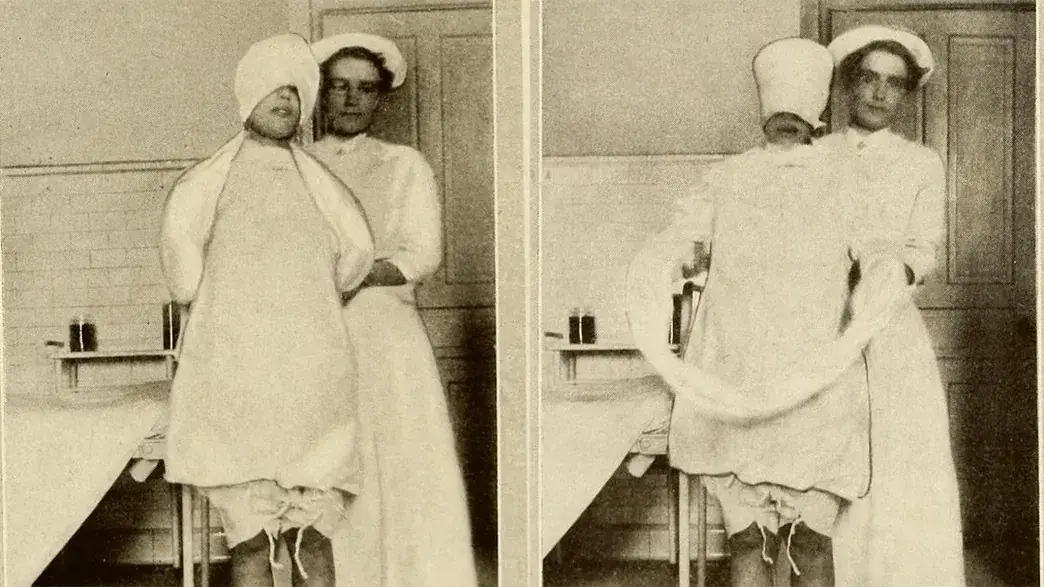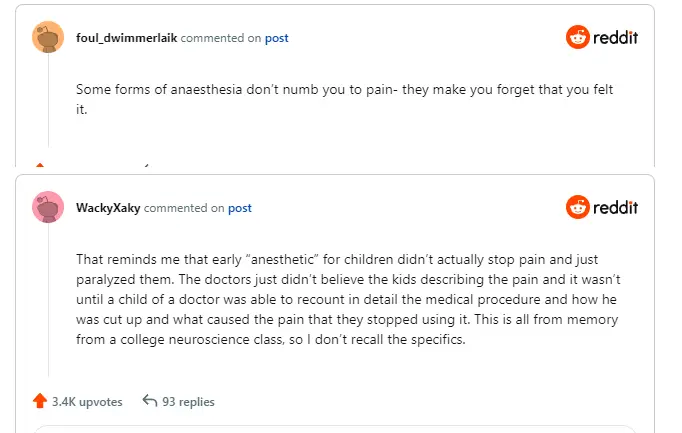Reddit users have recently initiated a discussion, inviting scientists to unveil lesser-known, unsettling scientific facts. While these revelations may be disconcerting, they offer valuable insights. If you’re sensitive to such information, it’s wise to skip ahead. For those willing to explore further, here is a compilation of noteworthy revelations. Some of these facts are self-evident, while we will provide additional context where necessary. This endeavor aims to shed light on the often overlooked aspects of science, encouraging a deeper understanding of the world around us.
Anthrax Can Remain Buried for Years and Revive
Anthrax, a deadly bacterial infection, has the unsettling ability to linger dormant in the environment for extended periods, only to re-emerge and pose a threat to both wildlife and humans. A notable incident in 2016 serves as a poignant example of this phenomenon: an anthrax outbreak occurred in Siberia, claiming the lives of over 1,500 reindeer, leading to the hospitalization of four individuals, and possibly contributing to the tragic death of a 12-year-old child. The catalyst for this alarming event was the thawing of a 75-year-old reindeer carcass that had been infected with anthrax.
This scenario underscores the vulnerability of Arctic regions to the consequences of climate change, particularly the thawing of permafrost. As global temperatures rise due to the climate crisis, permafrost, which has historically preserved dormant anthrax spores, is increasingly at risk of melting. This process can expose these dangerous bacteria to the surface, potentially leading to more anthrax outbreaks in the future.
The implications of such outbreaks are profound. Anthrax, caused by the bacterium Bacillus anthracis, can result in severe illness and death in both animals and humans. The Siberian incident serves as a stark reminder of the interconnectedness of climate change and public health. As we continue to grapple with the consequences of a warming planet, proactive measures to monitor and mitigate the risks associated with anthrax resurgence in thawing permafrost are imperative. This includes rigorous surveillance, public awareness campaigns, and research to develop strategies for preventing the re-emergence of this deadly disease. The specter of anthrax’s return from the depths of frozen earth serves as a sobering reminder of the urgent need for climate action and preparedness in the face of evolving environmental challenges.
Fatal Familiar Insomnia: A Terrifying Disease
Fatal insomnia is a rare prion disease that interferes with sleep and leads to deterioration of mental function and loss of coordination. Fatal Familial Insomnia (FFI) is a profoundly disturbing medical condition that merits attention due to its harrowing nature. This hereditary disorder typically manifests itself around the age of 50, making it particularly distressing for individuals who find themselves afflicted by it. FFI is primarily characterized by an unsettling and relentless inability to sleep, a symptom that worsens as the disease progresses.
The progression of FFI is marked by a series of alarming symptoms that significantly impact the quality of life of those affected. Early stages often include excessive sweating and constricted pupils, creating an uncomfortable and distressing experience. As the disease advances, stiffness in the neck, constipation, and hormonal imbalances become apparent, adding to the individual’s misery.
Perhaps the most agonizing aspect of FFI is the unrelenting insomnia. Despite their most desperate attempts to find solace in slumber, individuals with FFI are tragically unable to achieve anything beyond a light stupor. Sleep becomes an elusive and unattainable sanctuary.
The speed at which FFI takes its toll on a person is truly terrifying. Within a mere 18 months from the onset of symptoms, the individual succumbs to the fatal consequences of this relentless disease. The relentless march of FFI towards its fatal conclusion makes it a poignant reminder of the fragility of human health and the profound impact of rare and devastating medical conditions.
FFI serves as a stark reminder of the importance of medical research and the need for continued efforts to better understand and ultimately find effective treatments for such catastrophic illnesses. It also underscores the importance of appreciating the value of good health and the significance of each restful night’s sleep, a simple pleasure often taken for granted until it is lost to conditions like FFI.
Within 18 months of onset, people who get the disease are dead.
The Shocking Lack of Pain Relief for Premature Babies
Until 1985, there was a distressing lack of awareness regarding the extent of medical procedures performed on premature infants without the administration of pain relief. Unfortunately, even today, newborns continue to undergo painful procedures without adequate pain management protocols in place. This issue raises profound ethical and medical concerns.
The practice of subjecting infants to painful interventions without pain relief is a poignant reminder of the gaps in our medical understanding and ethical standards. The continued occurrence of this issue underscores the need for comprehensive reforms in neonatal care.
One particularly alarming historical practice, known as “Twilight Sleep,” involved administering a combination of drugs to laboring mothers to induce a state of semi-consciousness and pain relief during childbirth. While it was once considered a medical advancement, it has since been abandoned due to significant risks and ethical concerns.
In our pursuit of progress, it is essential to reflect on such practices, ensuring that we prioritize the well-being of vulnerable individuals, including newborns. Addressing this issue requires ongoing education, research, and advocacy to implement modern pain management techniques and ethical standards in neonatal care.
Deathbed Sounds and the Last Sense to Go
In a study conducted in 2020, a fascinating revelation emerged – the sense of hearing may persist as the last connection to the world for those on their deathbeds. This discovery, though at times eerie, offers both solace and intrigue, as it unveils a profound aspect of the intricate tapestry of human consciousness and the enigma that envelops the conclusion of life’s journey.
This revelation prompts us to contemplate the intricate nature of the human mind and the mysteries that shroud the threshold between life and death. To comprehend the sensory experiences of individuals during their final moments is to embark on a journey toward unlocking the secrets of the human psyche and the transition from existence to non-existence.
This study underscores the need for further exploration into the depths of our consciousness, challenging the boundaries of our understanding and emphasizing the importance of empathy and compassionate care during the final moments of life. It reminds us that even as the body weakens, the power of perception, in the form of hearing, persists as a testament to the enduring complexity of human existence.
The Potential Hazards of Storing Smallpox
The explosion of a Russian lab in 2019 that stored smallpox serves as a stark reminder of the potential dangers associated with housing deadly pathogens. Such incidents highlight the need for stringent safety protocols and rigorous containment measures to prevent accidental releases or biological emergencies. Ensuring the secure storage of infectious diseases is crucial for global health and safety.
Unearthed Science Facts
Uncovering lesser-known science facts can be both intriguing and unsettling. From the revival of anthrax to the terrifying reality of Fatal Familiar Insomnia, these revelations shed light on the hidden dangers and mysteries that exist within the world of science.
Sources:
Scientists Are Sharing “Scary” Science Facts
“Zombie” Anthrax Outbreak In Siberia
Anthrax-Causing Bacteria In Siberia

This Site Was Inspired By An Interest in Protecting the Environment:
We had the privilege and joy of learning from Dr. Charlie Stine who instilled a love for the natural world through incredible field trips with the Johns Hopkins Odyssey Certificate program in Environmental Studies. At the time, the program was endorsed by the Maryland Department of Natural Resources. Sadly, after Dr. Stine retired, the program was phased out. We hope that we honor his legacy by shining a bright light on environmental issues and sharing good news about the success of various conservation programs when possible.








